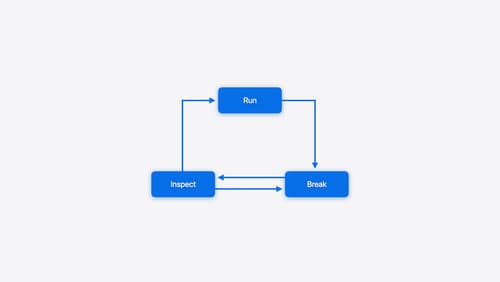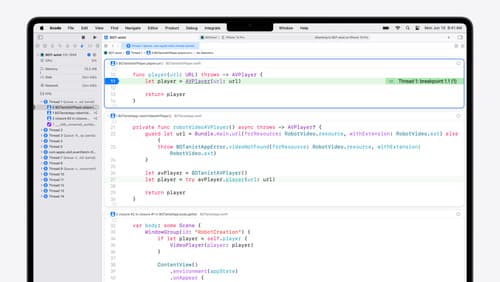what is dsym files in Xcode build
Asked on 2024-07-31
1 search
In Xcode, dSYM files (Debug Symbol files) are used to store debug symbols for your app. These symbols are essential for debugging because they map the binary code of your app back to the original source code, allowing you to see meaningful information like function names, variable names, and line numbers in crash reports and during debugging sessions.
From the context provided:
-
Run, Break, Inspect: Explore effective debugging in LLDB mentions that to get correct line number information with crash logs, you need to ensure that the dSYM bundle for that build is available. This is crucial for understanding the control flow of the program and for investigating crashes effectively.
-
What’s new in Xcode 16 highlights that with DWARF 5, dSYM bundles are smaller and symbol lookups are faster, which improves the debugging experience.
For more detailed information on how dSYM files are used in debugging, you can refer to the session Run, Break, Inspect: Explore effective debugging in LLDB (06:33).
Relevant Sessions:

Run, Break, Inspect: Explore effective debugging in LLDB
Learn how to use LLDB to explore and debug codebases. We’ll show you how to make the most of crashlogs and backtraces, and how to supercharge breakpoints with actions and complex stop conditions. We’ll also explore how the “p” command and the latest features in Swift 6 can enhance your debugging experience.

Analyze heap memory
Dive into the basis for your app’s dynamic memory: the heap! Explore how to use Instruments and Xcode to measure, analyze, and fix common heap issues. We’ll also cover some techniques and best practices for diagnosing transient growth, persistent growth, and leaks in your app.

What’s new in Xcode 16
Discover the latest productivity and performance improvements in Xcode 16. Learn about enhancements to code completion, diagnostics, and Xcode Previews. Find out more about updates in builds and explore improvements in debugging and Instruments.
